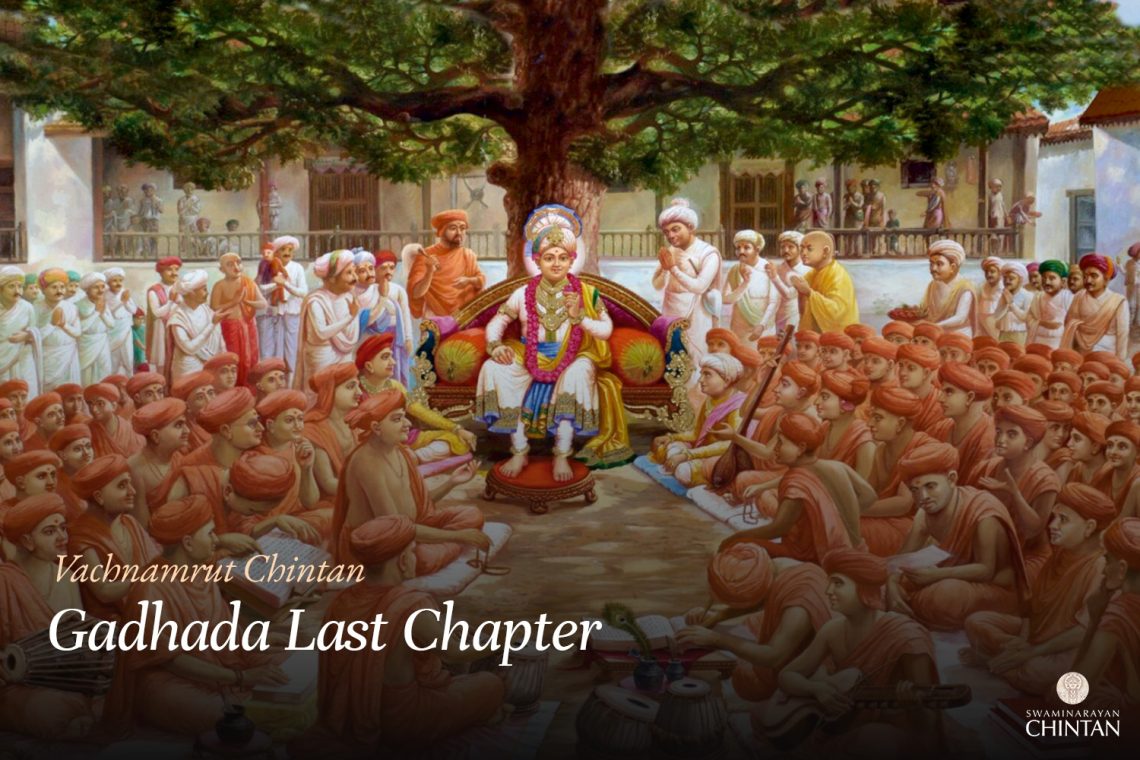Central Insights:
- Characteristics of diminished vasna.
Key Points:
- The extent to which the jiva (soul) lovingly connects with Bhagwan or His ekantik bhakta determines the degree to which vasna is weakened or eliminated.
- Even after the detachment of vasna, some body-consciousness persists to fulfill Bhagwan’s commands or engage in navdha bhakti (nine forms of devotion).
Explanation:
In this Vachanamrut, Raghuveerji Maharaj begins by asking, “Why does the soul’s state differ between the wakeful state and the dream state?”
To this, Maharaj replies, “The soul’s state in dreams is identical to its state during wakefulness. The vasna that exists during wakefulness also manifests in dreams.”
Next, Nirlobhanand Swami inquires, “Maharaj, why do objects that one has never seen or heard of during wakefulness appear in dreams?”
Maharaj explains, “Such objects appear due to the impressions (vasna) of experiences from previous lives. Without prior experience or impressions, memories cannot arise.”
Then, Akhandanand Swami asks, “Maharaj, how long does the force of past-life actions (karma) linger in the life of a devotee of Bhagwan?”
Maharaj responds, “As the jiva associates with satpurush (a true saint) and lovingly attaches itself to Bhagwan, past-life vasna gradually diminishes. The vasna embedded in the heart of the jiva cannot merely age with time; instead, if unchecked, it can assume newer, stronger forms. Time alone cannot weaken vasna. However, the extent to which the jiva lovingly attaches itself to Bhagwan and His ekantik bhakta, the corresponding vasna diminishes and becomes feeble. When this happens, such vasna no longer propels the jiva into the cycle of birth and death.”
Maharaj offers an analogy: “Just as rice grains that are three to four years old can still be consumed but no longer sprout when sown, when vasna weakens, it no longer causes rebirth. However, the effects of past actions can manifest in two ways. If the effects are strong, they can perpetuate the cycle of birth and death. But when the effects are feeble, they only bring about bodily joys and sorrows until destiny runs its course but do not lead to further rebirth.”
The Yoga Shastras mention that the jiva is made up of three components:
- Consciousness (chaitanya).
- The accumulation of past karma.
- The five obstacles (avidya, asmita, raga, dvesh, and abhinivesh).
As long as the jiva is bound by these five obstacles, it cannot overcome its past actions and must endure their fruits. If these obstacles—primarily stemming from attachment (raga)—are eradicated, then even the presence of past karma cannot compel the jiva to endure their fruits.
These obstacles, mostly rooted in raga, are overcome by diverting attachment from worldly objects to Bhagwan and His true devotees or sant. When this occurs, worldly attachments diminish, and the jiva becomes protected from the fruits of past karma. Diminished vasna manifests as the weakening of worldly desires and inclinations, allowing divine inclinations to prevail.
Maharaj then asks the paramhansas (renunciates), “How can devotees recognize when a particular devotee has shed body-consciousness and detachment from sensory pleasures?”
When the saints could not provide an answer, Maharaj Himself explains: “A devotee may have renounced body-consciousness and attachment to sensory pleasures, but by Bhagwan’s will, he must retain sufficient body-consciousness to perform varna and ashram duties and practice devotion (bhakti). He may also enjoy sensory objects as deemed necessary by Bhagwan’s command.
“For instance, a frail and emaciated animal may be propped up using wooden beams and ropes tied to its horns and tail. It remains standing only as long as it is supported. Similarly, when body-consciousness and sensory attachments are eradicated, the devotee engages in actions solely to the extent willed by Bhagwan. Beyond this, his engagement with worldly matters ceases naturally, free from ego or personal desire.
“A svasanik (one still influenced by vasna) cannot detach from worldly pleasures, even when acting under Bhagwan’s command. Such an individual still seeks personal gratification, exceeding the bounds of Bhagwan’s will. This distinguishes a devotee free of vasna from one still bound by it.”
Glossary
| Vasna – Latent desires Deep-rooted tendencies or impressions that drive thoughts, actions, and attachments, influencing spiritual progress. |
| Jeev – Soul The individual consciousness or self, which is distinct from the body and mind but bound by the influences of Maya. |
| Ekantik Bhakta – Single-minded devotee A devotee imbued with Dharma, Gyan, Vairagya, and Bhakti, fully dedicated to God. |
| Satpurush – A true saint or spiritual guide |
| Chaitanya – Pure consciousness The essential consciousness that is divine and not bound by material limitations, from which the Vritti arises and is ultimately guided towards the divine. |
| Rag – Attachment Excessive desire or attachment to sensory objects or experiences, seen as a stage of Moh. |
| Avidya – Ignorance Lack of spiritual wisdom, which leads to bondage in Maya. |
| Abhinivesh – Fear of death |
| Paramhansa – Supreme Renunciates A highly evolved saint who has renounced all worldly attachments and is solely devoted to God. |
| Navdha Bhakti – Nine forms of devotion Various ways of expressing devotion to Bhagwan, including listening, singing, remembering, serving, etc. |
| Svasanik – One influenced by vasna A person still driven by worldly desires and attachments. |

